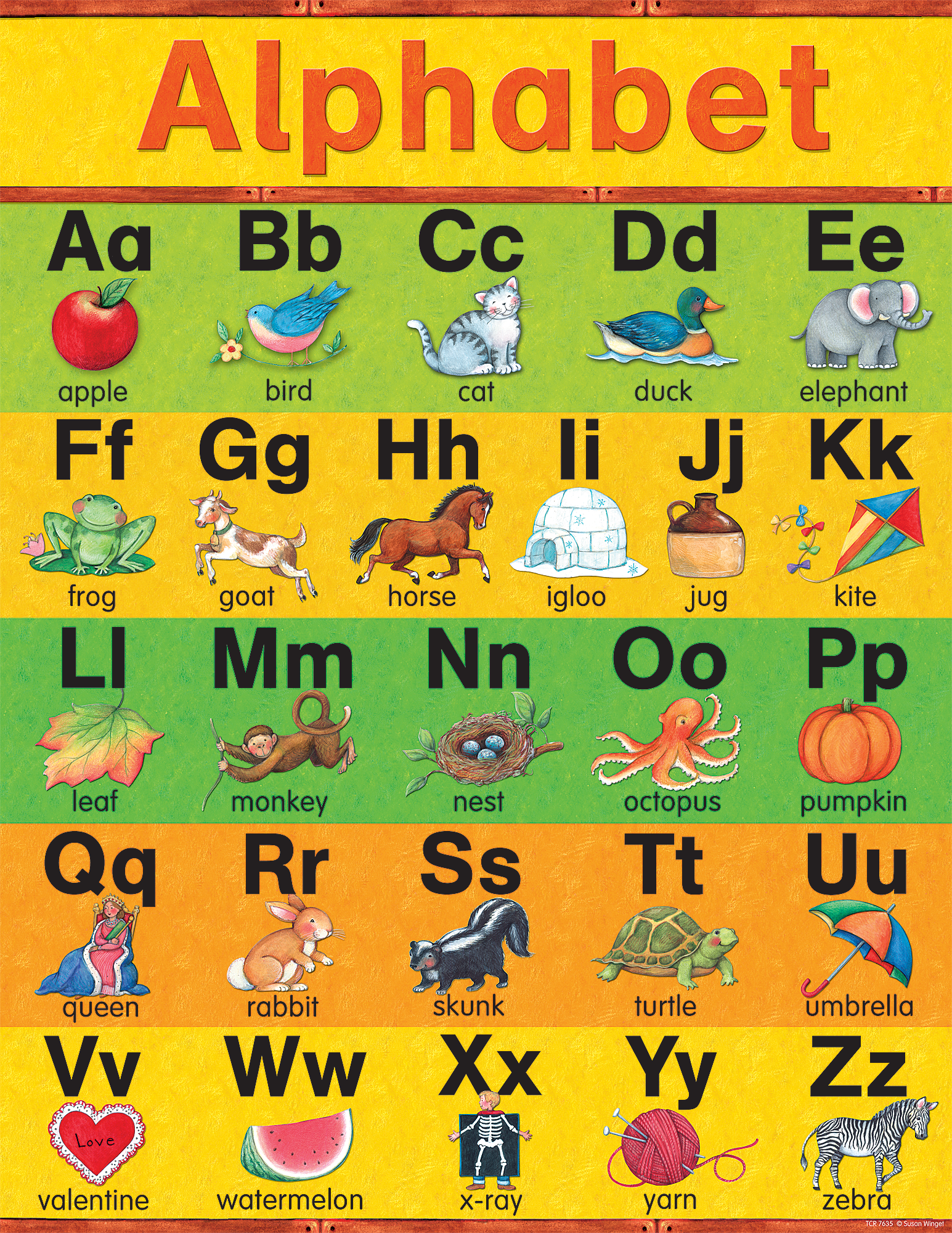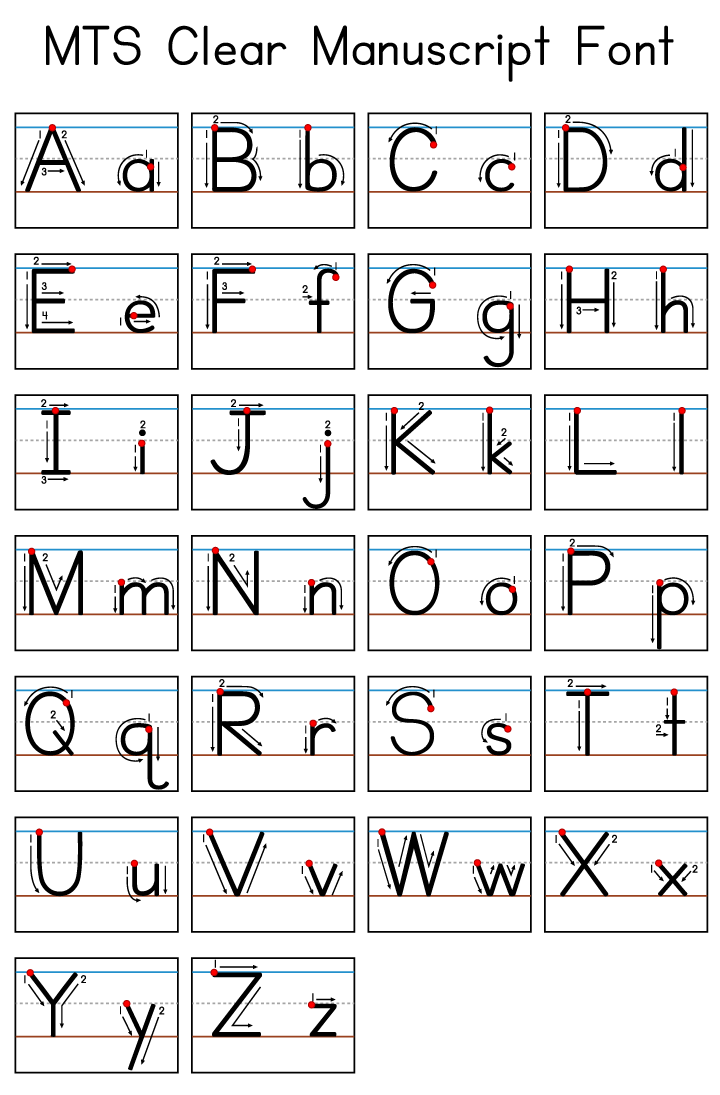Have you ever wondered how children learn the letters of the alphabet so effortlessly? It seems like such a simple task, but for young learners, it can be quite challenging. In this blog post, we will explore the process of learning the letters of the alphabet and the importance of developing this skill for future reading and writing success.
Pain Points in Learning the Letters of the Alphabet
Learning the letters of the alphabet can be a daunting task for many children. It requires them to memorize the shape, sound, and sequence of each letter. This can be overwhelming, especially for children who struggle with language or auditory processing. Additionally, some children may find it difficult to differentiate between similar-looking letters, such as 'b' and 'd'. These pain points can lead to frustration and a lack of motivation to continue learning.
The Target of Learning the Letters of the Alphabet
The target of learning the letters of the alphabet is to develop phonemic awareness and letter recognition skills. Phonemic awareness is the ability to hear and manipulate individual sounds in spoken words, while letter recognition is the ability to identify and name letters. These skills are essential for reading and writing, as they form the foundation of literacy. By mastering the letters of the alphabet, children can unlock the world of language and communication.
Main Points: Learning the Letters of the Alphabet
1. Developing phonemic awareness and letter recognition skills is crucial for reading and writing success. 2. Learning the letters of the alphabet can be challenging for children, especially those with language or auditory processing difficulties. 3. Frustration and lack of motivation are common pain points in the learning process. 4. There are various strategies and resources available to support children in learning the letters of the alphabet.
Personal Experience: Journey to Learning the Letters of the Alphabet
As a teacher, I have witnessed the diverse learning journeys children take when learning the letters of the alphabet. One student stands out in my memory - Jake, a shy and reserved boy who struggled with identifying letters. To support him, I incorporated hands-on activities, such as letter puzzles and alphabet songs, into our daily routine. Over time, Jake's confidence grew, and he became more eager to participate. Seeing him proudly recognize and name the letters was a rewarding experience for both of us.

Learning the letters of the alphabet can be an interactive and engaging process, just like the Coogam Wooden Alphabet Puzzle shown above.
Exploring Different Approaches to Learning the Letters of the Alphabet
Every child is unique, and their learning preferences and styles may vary. Some children thrive in hands-on, sensory experiences, while others prefer visual or auditory learning. To cater to different needs, educators and parents can explore a variety of approaches, such as:

The Alphabet Chart from Susan Winget shown above can serve as a visual aid to support letter recognition.
- Using alphabet charts and posters
- Playing alphabet games and puzzles
- Singing alphabet songs
- Engaging in letter-based crafts and activities
- Reading alphabet books
Diving Deeper: Letter Sound Associations and Phonics
Once children have a solid understanding of letter recognition, the next step is to make connections between letters and their sounds. This is where phonics instruction comes into play. Phonics is a method of teaching reading and writing by developing an understanding of the relationship between sounds and letters. It involves teaching children how to decode words by blending letter sounds together. By learning phonics, children can begin to read and spell words independently, expanding their literacy skills.
A Personal Reflection on the Importance of Learning the Letters of the Alphabet
Reflecting on my own journey of learning the letters of the alphabet, I am grateful for the foundation it provided in my literacy development. Without this fundamental knowledge, I would not have been able to read books, write stories, or communicate effectively. Learning the letters of the alphabet opened doors to new worlds and created possibilities for lifelong learning. It is a skill worth nurturing and celebrating in every child.

The Learning the Alphabet resource shown above provides a comprehensive approach to teaching the letters of the alphabet.
Question and Answer: Learning the Letters of the Alphabet
Q: How can I make learning the letters of the alphabet fun for my child? A: You can make learning the letters of the alphabet fun by incorporating games, songs, and hands-on activities into their daily routine. For example, you can play 'I Spy' with letter objects or sing the alphabet song together. Q: What age should my child start learning the letters of the alphabet? A: Children can start learning the letters of the alphabet as early as two to three years old. However, it is important to remember that every child develops at their own pace, so it is best to follow their readiness and interest. Q: How can I help my child differentiate between similar-looking letters? A: To help your child differentiate between similar-looking letters, you can focus on their distinctive features and practice letter formation through tracing or drawing. Repetition and visual cues can aid in strengthening their letter recognition skills. Q: Are there any online resources or apps that can support learning the letters of the alphabet? A: Yes, there are many online resources and educational apps available that can support learning the letters of the alphabet. These resources often include interactive games, videos, and printable worksheets to engage children in the learning process.
Conclusion of Learning the Letters of the Alphabet
In conclusion, learning the letters of the alphabet is a vital step in a child's journey towards literacy. It lays the foundation for reading and writing skills and opens doors to a world of communication and expression. By understanding the pain points and target of learning the letters, exploring diverse approaches, and embracing phonics instruction, we can support children in mastering this essential skill. Let us celebrate the joy and wonder of learning the letters of the alphabet with our young learners.
If you are searching about Learn Alphabet for Children ABC Song for Kids | Uredjenje Stana.org you've visit to the right web. We have 5 Images about Learn Alphabet for Children ABC Song for Kids | Uredjenje Stana.org like Learn Alphabet for Children ABC Song for Kids | Uredjenje Stana.org, Alphabet Chart from Susan Winget - TCR7635 | Teacher Created Resources and also Alphabet Chart from Susan Winget - TCR7635 | Teacher Created Resources. Read more:
Learn Alphabet For Children ABC Song For Kids | Uredjenje Stana.org
 www.uredjenjestana.org
www.uredjenjestana.org doh letters toys
English Alphabet Pronunciation | Alphabet Flashcard For Kindergarten Kids
 www.holidayeducationist.com
www.holidayeducationist.com alphabet abc english kids kindergarten colorful flashcard flashcards abcs alphabets app cards pronunciation learning alfabeto children flash apple seleccionar tablero
Alphabet Chart From Susan Winget - TCR7635 | Teacher Created Resources
 www.teachercreated.com
www.teachercreated.com alphabet chart learning charts english apple sw early color letters abc letter things teacher created resources poster language education winget
Coogam Wooden Alphabet Puzzle – ABC Letters Sorting Board Blocks
 www.walmart.com
www.walmart.com alphabet abc puzzle letter puzzles alphabets toddlers baby wooden kids name letters learning games board jigsaw kindergarten years set educational
Learning The Alphabet | MyTeachingStation.com
 www.myteachingstation.com
www.myteachingstation.com alphabet learning teaching font letters manuscript kindergarten teach mts clear myteachingstation preschool letter abc worksheets kids fonts english each tracing
Learn alphabet for children abc song for kids. Alphabet chart learning charts english apple sw early color letters abc letter things teacher created resources poster language education winget. Alphabet chart from susan winget

No comments:
Post a Comment